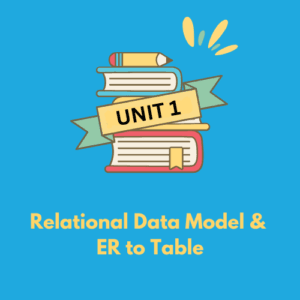
Click On the Download Button Below 
Introduction to Relational Data Model and ER TO TABLE :-
In this chapter, we will study the concepts of relation, tuples and attributes. We will further look at the meaning of the term integrity and the various integrity constraints. The relational model is very simple and elegant: a database is a collection of one or more relations, where each relation is a table with rows and columns. This simple tabular representation enables even novice users to understand the contents of a database, and it permits the use of simple, high-level languages to query the data. The major advantages of the relational model over the older data models are its simple data representation and the ease with which even complex queries can be expressed.
Objectives of Relational Data Model and ER TO TABLE :-
Objectives of Relational Data Model:
- Organize data into structured tables (relations).
- Ensure data integrity using keys (primary, foreign).
- Support efficient data retrieval and querying.
- Minimize redundancy through normalization.
- Provide data independence between application and database.
- Enable flexibility and scalability in data storage.
Objectives of ER to Table Conversion:
- Translate real-world entities into database tables.
- Map attributes to table columns.
- Convert relationships into foreign keys for data integrity.
- Ensure proper normalization during conversion.
- Create a clear, structured schema for efficient database design.
- Maintain consistency and reduce redundancy in the relational model.
Summary of Relational Data Model and ER TO TABLE :-
The Relational Data Model organizes data into tables (relations) with rows (records) and columns (attributes). It uses keys (primary and foreign) to maintain data integrity, minimize redundancy, and ensure efficient querying.
ER to Table is the process of converting an Entity-Relationship diagram into a relational schema. Entities become tables, attributes become columns, and relationships are represented as foreign keys. This conversion ensures data integrity, reduces redundancy, and structures the database for efficient storage and retrieval.
Database Systems Subject Link
